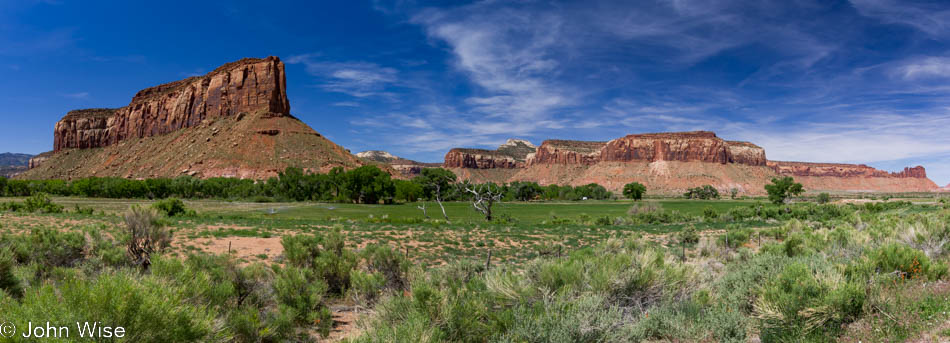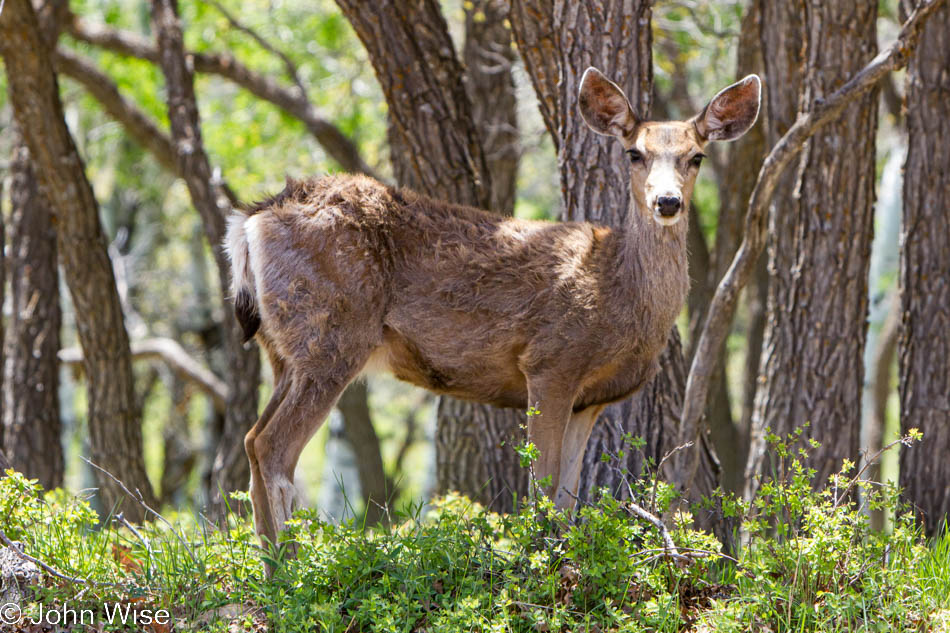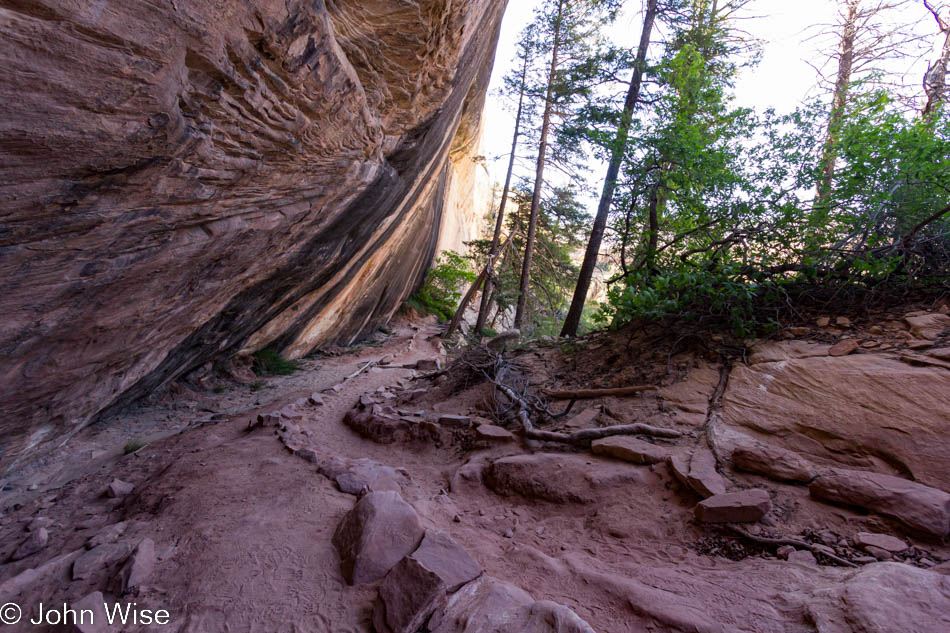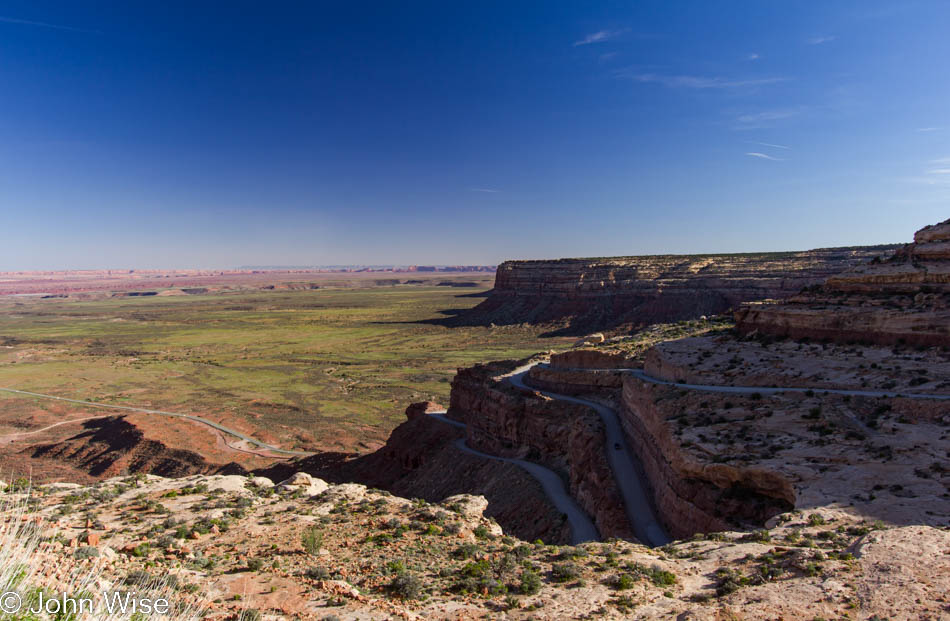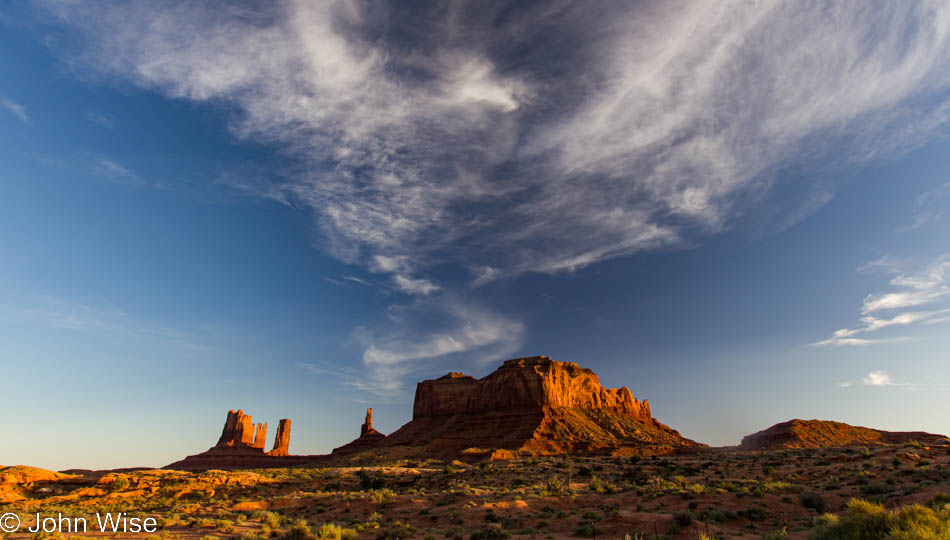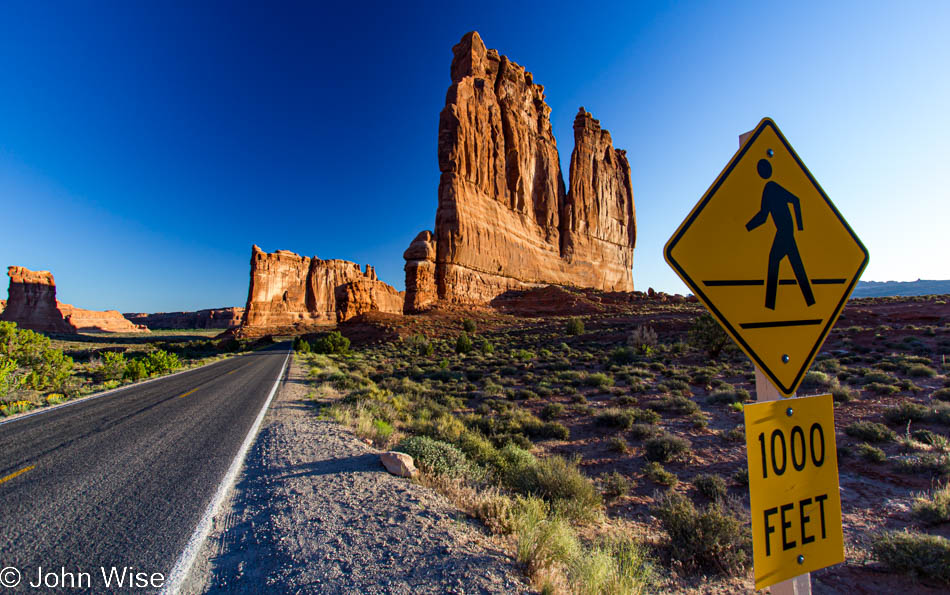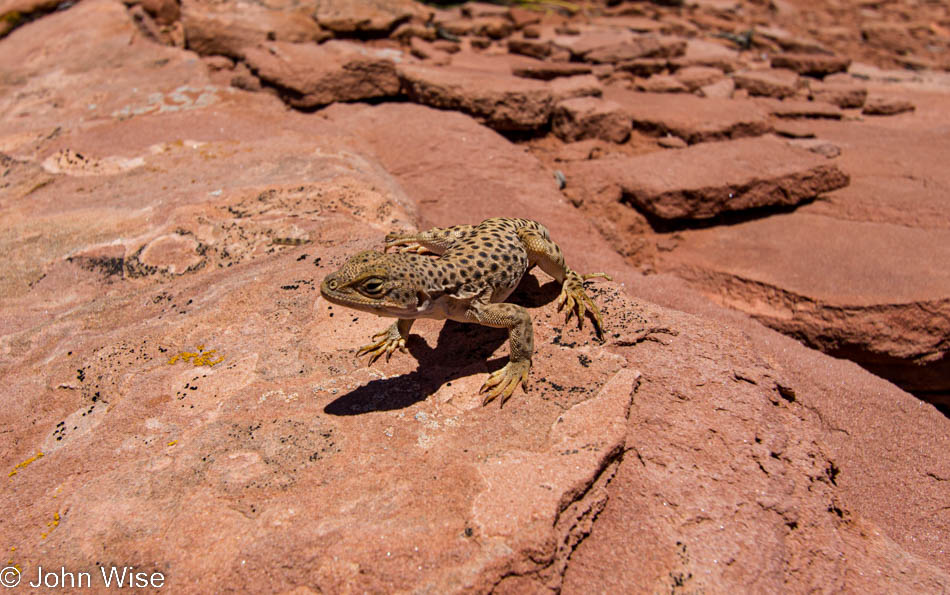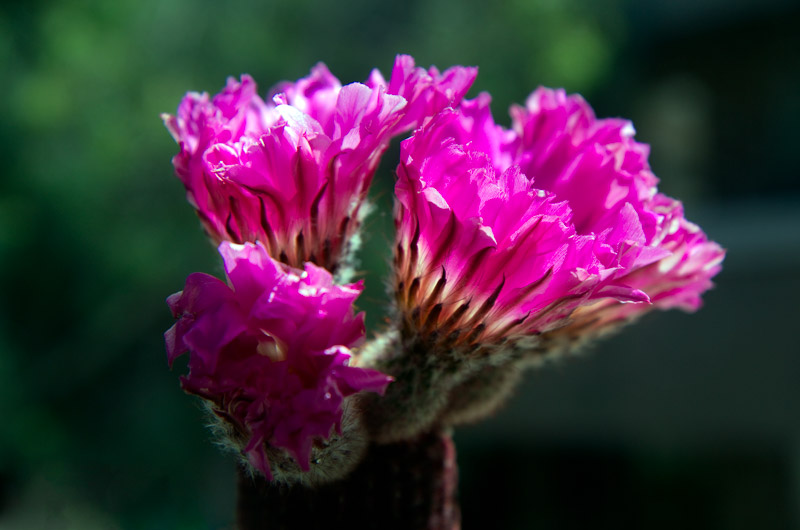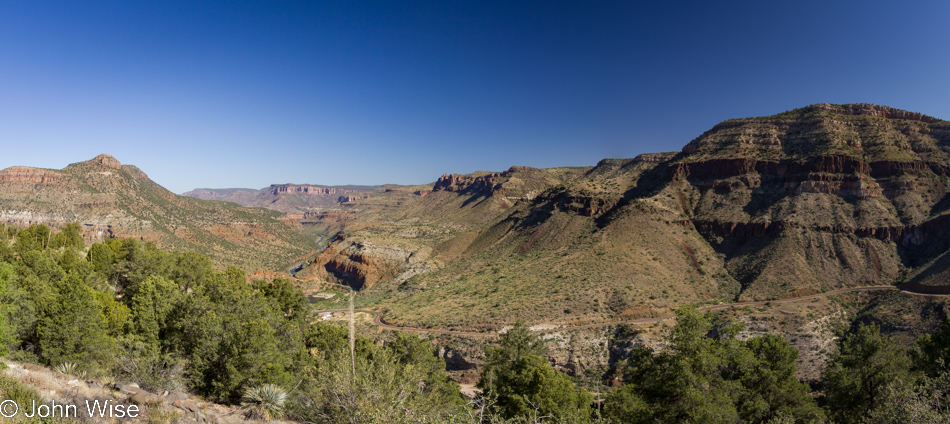
Early in our road trip days, it wasn’t uncommon to take a single day to explore. In the past few years, it has become the norm to venture far and wide, taking five, seven, or ten days to immerse ourselves in a destination far away. Today, we return to form. Out over Globe, Arizona, and up through the Salt Canyon, the road climbs toward the White Mountain Apache Reservation. We pass through Show Low on our way northeast.

Remember Y2K? Here in Concho, Arizona, it appears that the nearly deserted Shiloh Village may have been part of that lore. With rusting street lights, underground electricity, and the random fire hydrant, there isn’t much out here – besides Red Rock Ranch & Farms. And this ranch is precisely the reason for taking the 200+ mile drive today. We are attending the 7th Annual Arizona Lavender Festival.
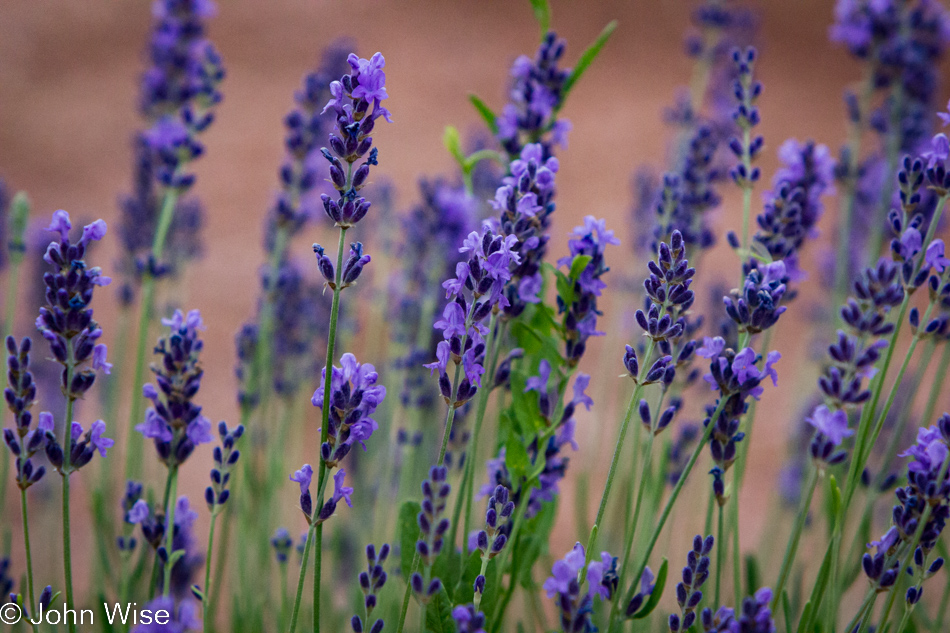
Lavender is everywhere. Different colors of lavender, shades of purple to snowy white. The festival isn’t a grand affair out here in the middle of nowhere, but it’s intimate enough to be personal and worth the visit. The first folks we spoke with are from Terroir Seeds Company, a small family-owned operation specializing in heirloom and open-pollinated seeds. After signing up for their catalog, it was time for the first cooking demonstration using lavender in the kitchen. With about sixty of us crowding around the speaker, we were invited to sample a half dozen lavender-inspired concoctions, including a lavender lemonade mix that led me to think about making a green tea, lavender, and limeade drink after returning to Phoenix.

Back outside, the wind kicked up and gave the appearance that a monsoon was on the way. Outback, we snagged two box lunches we had reserved – both meals were prepared using lavender. I had the chicken and lavender wrap with lavender couscous, a non-lavender coleslaw, and a lavender ginger cupcake, while Caroline had the lavender veggie wrap and the same sides as I. Before leaving, we bought a small lavender plant, a cookbook for using lavender in your meals, and a lavender and chili blend called Herbes de Concho. This particular spice blend uses a chili that nearly went extinct from the local area known as the Concho Red Chili; seeds for this chili are available from Terroir Seeds.
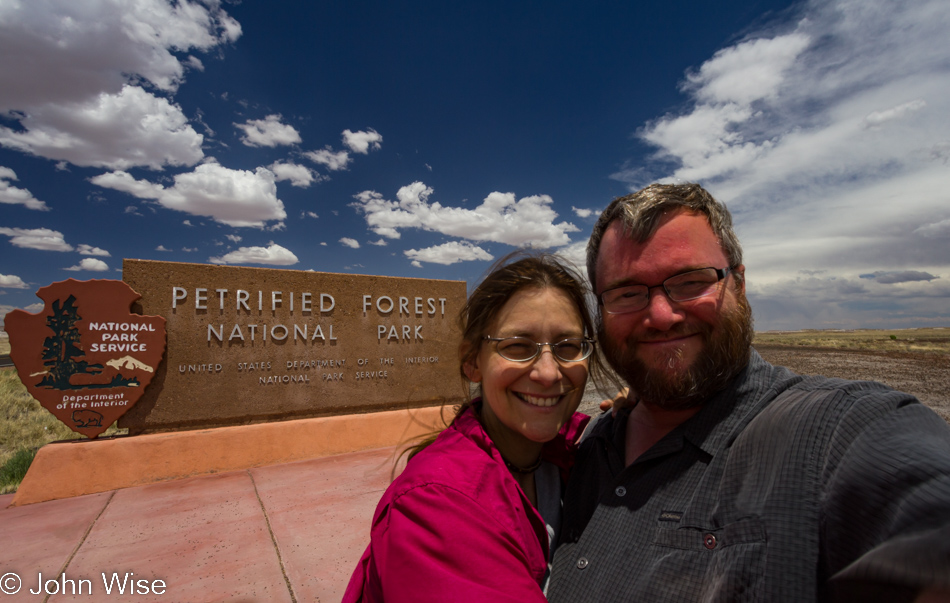
If we are this far north, there is no other choice but to visit the Petrified Forest National Park just a few miles up the road. Not that we haven’t been here a half dozen times already, but this visit is for Caroline to, you guessed it, get her Junior Ranger Badge. After the obligatory self-portrait in front of the park sign, we head directly to the visitors center to make the case for why my big kid needs to be a Junior-Senior Ranger. They oblige her, and she is quick to get busy working on what lessons will be learned for this honor.
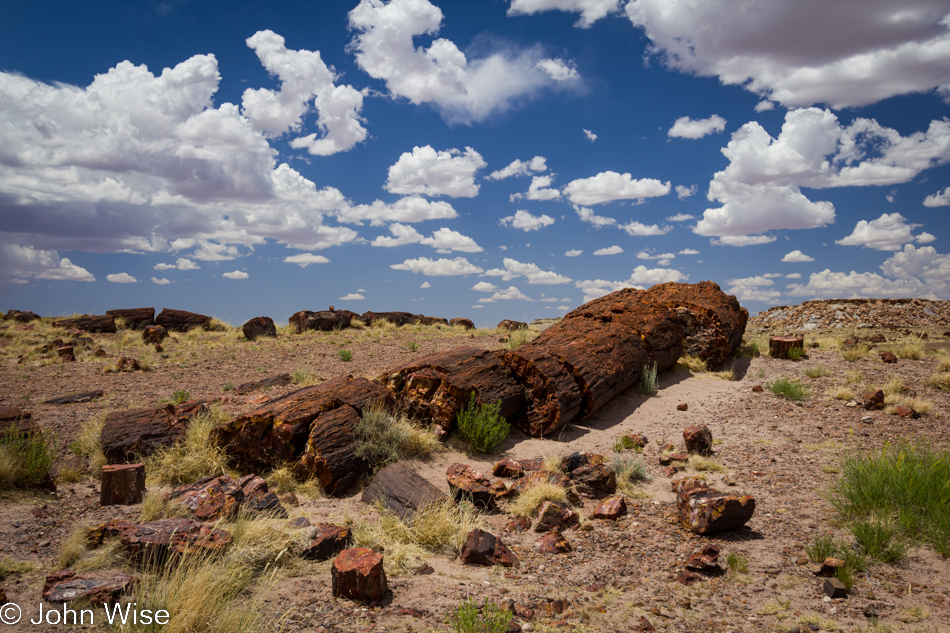
Our first trail is just outside the visitors center, and you may or may not know of all of the signs that tell visitors to stay on the trail, well, they apparently rarely mean what they demand. What is wrong with these incompetent nincompoops? Were they born yesterday, did they forget their brain in the car, or did their children siphon off the remaining intelligence through their incessant pestering, complaining, and various neuroses? Hey wife, get to work as Ms. Junior Ranger and get those people off the log and back on the trail. Right, fine, I’ll be the Ranger Man here and give you an example of how it’s done. “Hey you, yeah you, do you see a trail over there? Can you read? Do I need to pull out my tazer, zap you, and drag your convulsing body back onto the trail?” Yep, that’s how I did it, sort of. Alright, in truth, that was the dialog in my imagination before the more polite words, “Excuse me, you need to return to the trail; the sign behind us says, STAY ON THE TRAIL,” fell from my mouth.
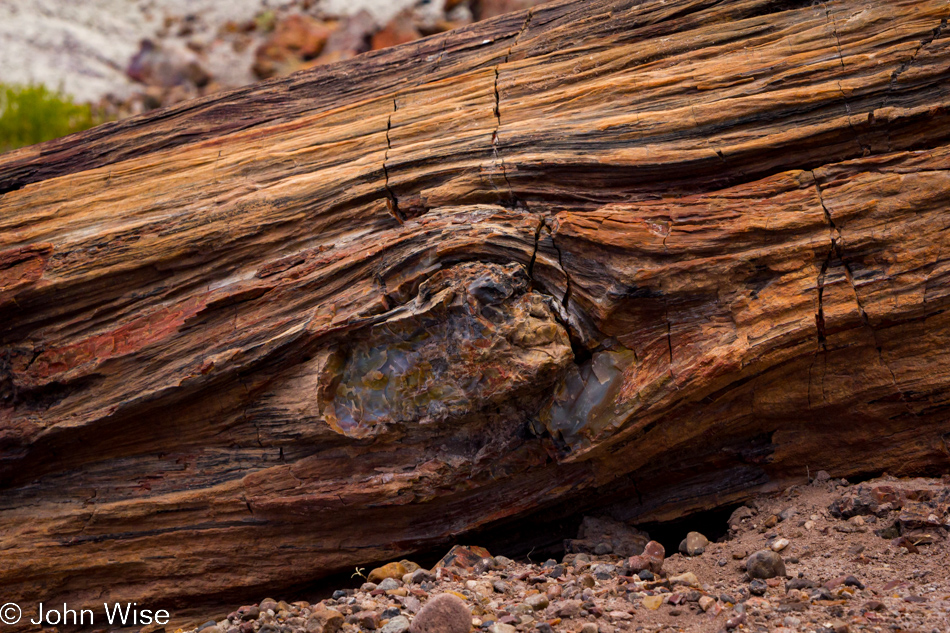
Now free of our National Park good deed work, we get to the more important task of enjoying our time learning new things about the Petrified Forest we hadn’t known before. Caroline sits in the middle of the trail inspecting rocks. Rocks that used to be trees. Rocks that, in some cases, still look like trees. Such as this one where a knot is still visible; I’m guessing there may have been a branch of the tree connected here some gazillion years ago. All of the petrified trees here have fallen over; in one particular tree at the base of the root structure, you can see the gravel the root system was holding on to as the tree toppled. Today, if you visit the Redwoods, the Sequoias, or Olympic National Park, you can see the exact same situation in the roots of more recently felled trees. Nature’s time frozen in stone.
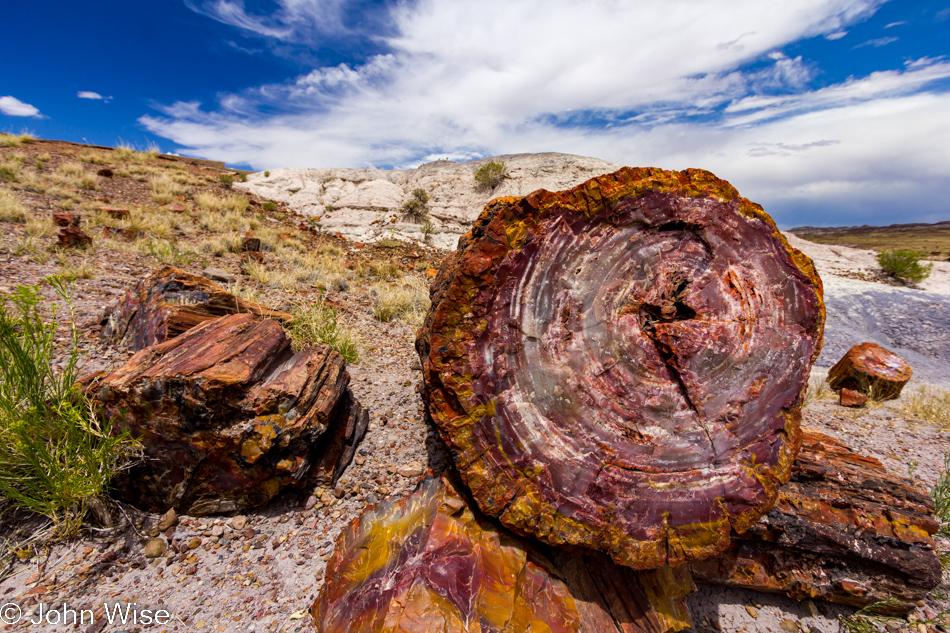
Oh, the desire to have a souvenir, to have a massive piece of petrified wood that is way too big for our small abode. It wouldn’t matter that it is too big; it would compete with my attention for the internet as I sit for hours in my purpose-bought chair that would be used solely for staring at the intricacies of how the minerals in the trunk of this tree overtook the organic material replacing it with colorful stone. Maybe we could buy one of those polished slices the size of a dining table, they can’t be much more than thirty, forty thousand dollars.
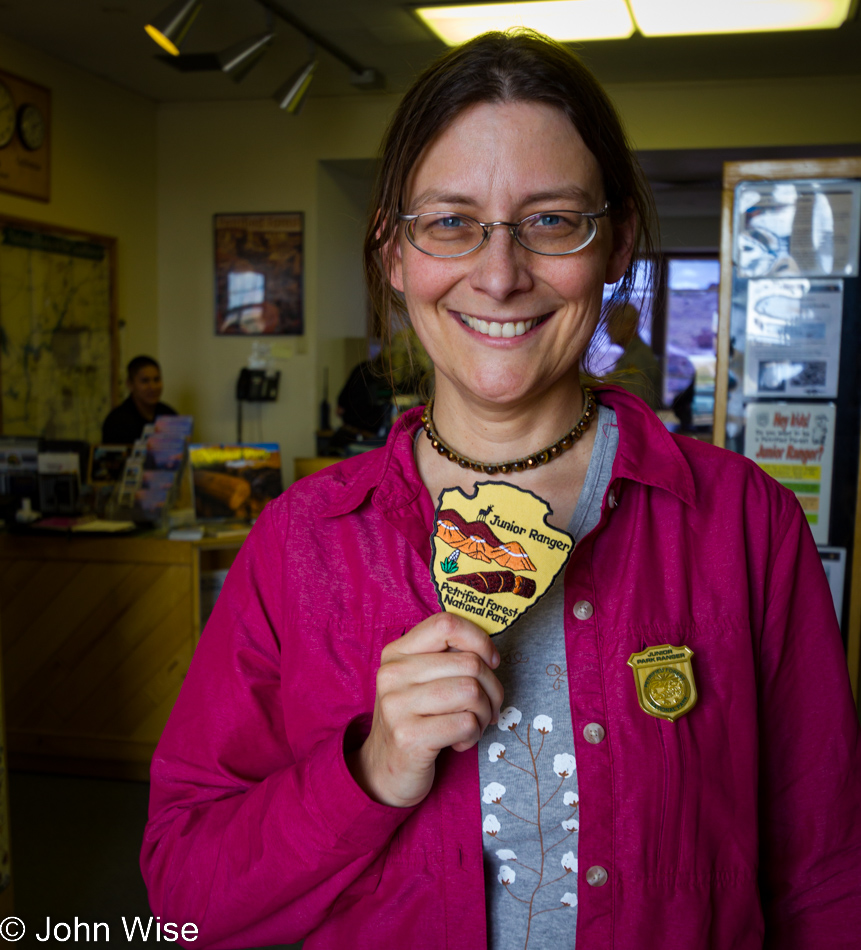
The winner of not just a Junior Ranger Badge but a patch, too, all that hard work paying off.
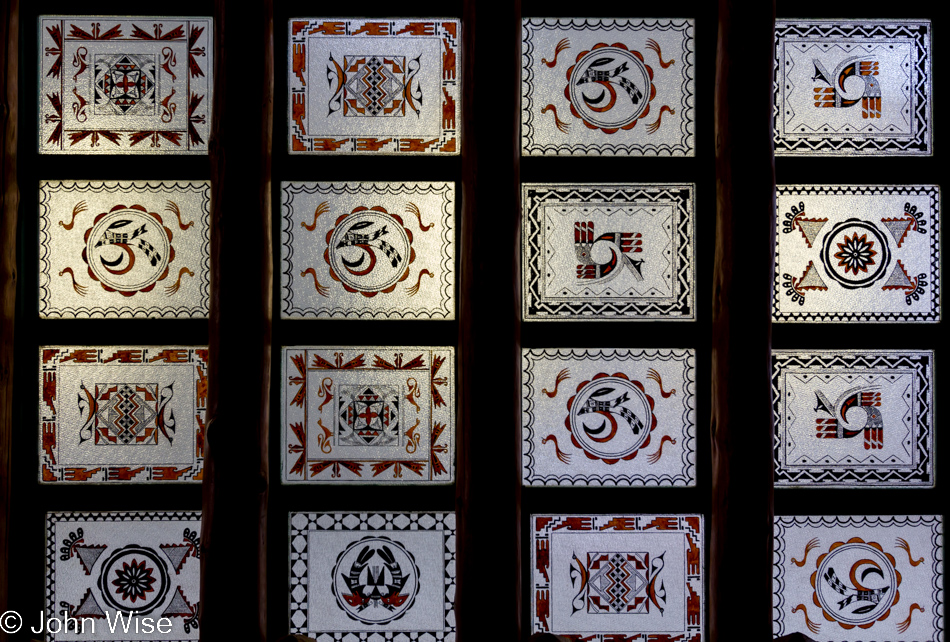
The Painted Desert Inn, once a trading post, then an inn and restaurant, is now a museum. The last time we came through, it was being refurbished. Today, it is a gleaming nostalgic example of what we lose as we rush to modernization. Route 66 use to deliver visitors right to the door of this beautiful National Historic Landmark. The Civilian Conservation Corps built the Inn between 1937 and 1940 but by 1963 the Fred Harvey company closed it and by the mid-70’s its demolition was proposed. Only by a raucous public outcry was the building saved. The painted glass panels above are in the ceiling and are all original – this building is a treasure.
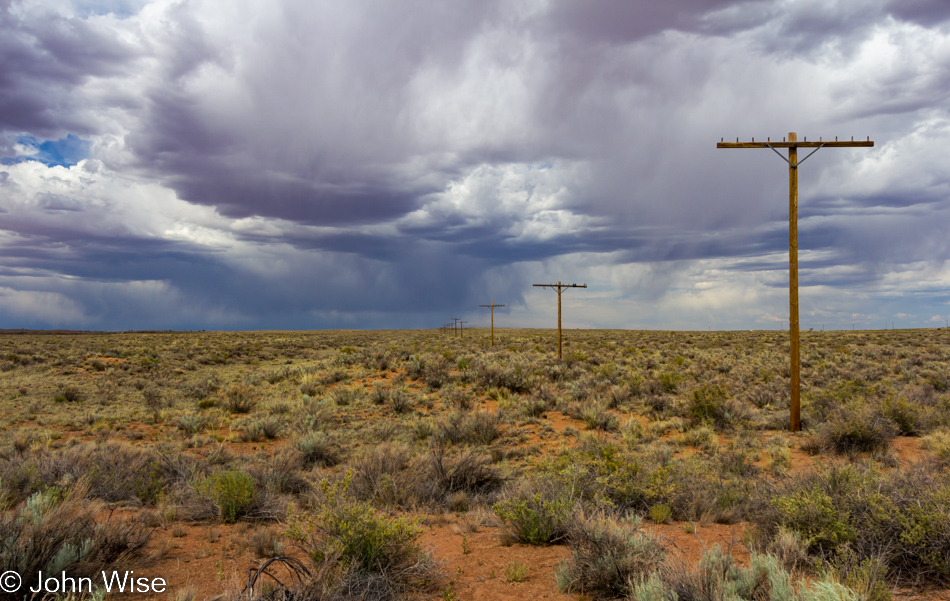
Speaking of old Route 66, while most of it is gone supplanted in large part by Interstate 40 here in Arizona, there are small still paved segments still navigable. Here in Petrified Forest, there is this stretch where the mother road once flowed. Just to the left of those old telephone poles, the roadbed is now long gone, but the poles and a sign bring attention to passersby that this world-famous road was once here.
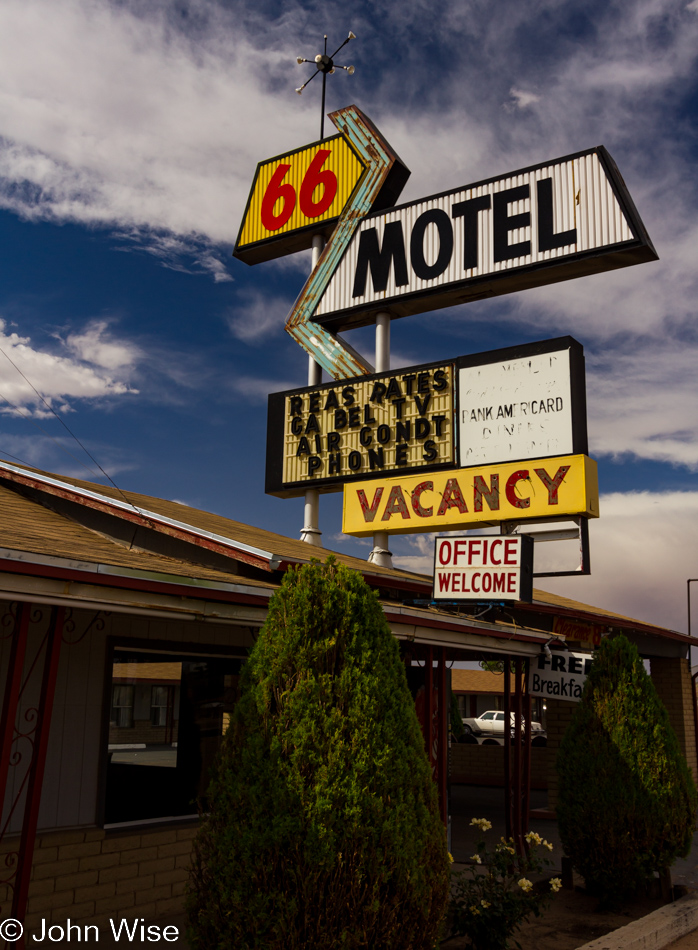
The nostalgia has us hankering for a chocolate malted in an old-style diner on good old Route 66, so we aim the car for Holbrook, and wouldn’t you know it, the first old-fashioned diner is owned by a Hindu who doesn’t have malteds or apple pie and ice cream on the menu. Caroline remembers a Dairy Queen further in town, and so we go that way. On the way over, we recognize the first-ever motel we stayed in some ten or so years ago, the 66 Motel. There’s a back story to this adventure back then. I was horrified at staying at a cheap motel, all the stories of bugs, filth, noise, etc., but for Caroline, it was all about the neon, Route 66, the nostalgia, and the Americana of it all. So after relentless requests to stay at one of these dives, I finally gave in, choosing the cheapest place, which is also the furthest from the freeway, the 66 Motel, with rooms from $16.95 – I take the room without a look at it. Turns out, this wasn’t so bad after all, and so it went that from that day on Caroline and I have taken to the cheapest motels America has to offer. And after more than 400 nights in these places, we have only had to leave three that were disgusting beyond description.






